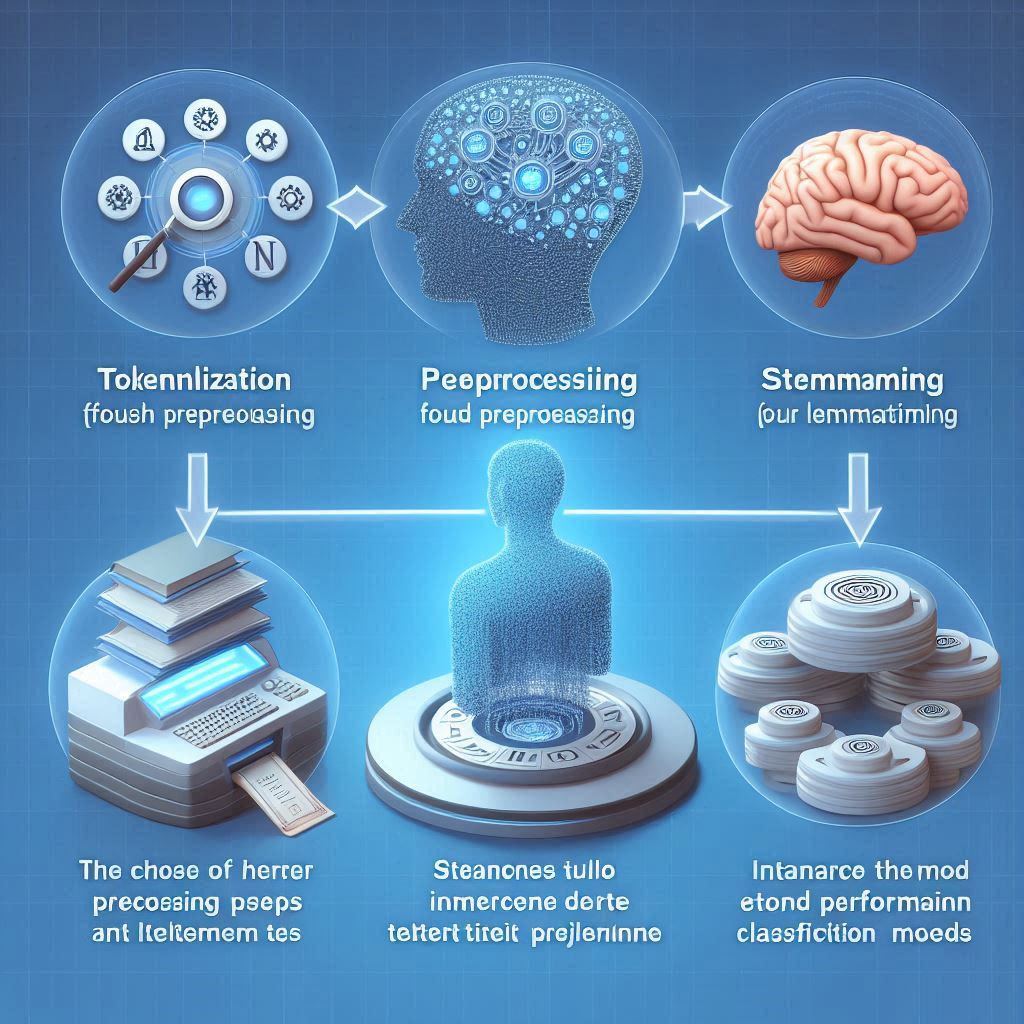Introduction: Best Practices for Crafting Effective Prompts
ChatGPT and AI are powerful tools used to facilitate conversations between humans and machines. By crafting effective prompts, developers can create meaningful conversations that are both engaging and informative. This article will explain the various techniques used to generate effective prompts for ChatGPT and AI applications, as well as tips for writing prompts that will engage users. Additionally, this article will discuss the benefits of testing prompts and provide examples of good prompts. Finally, it will discuss strategies for optimizing prompts in the long-term.
What are ChatGPT & AI?
ChatGPT (short for Chatbot Generative Pre-trained Transformer) is a type of natural language processing that provides AI with the ability to generate conversations with humans. This technology has been used in a variety of applications, from customer service chatbots to language translation. AI, on the other hand, is a set of algorithms used to automate certain processes and tasks. AI is used in a wide range of applications, from healthcare to finance. By combining the two technologies, developers can create conversational AI applications that can engage in meaningful conversations with humans.
The Benefits of Effective Prompts
The primary benefit of crafting effective prompts for ChatGPT and AI applications is that it allows developers to create conversations that are both engaging and informative. Effective prompts can help users understand the context of the conversation, as well as provide them with relevant information that will help them make informed decisions. Additionally, effective prompts can help ensure that conversations stay on topic and are not derailed by irrelevant information. Finally, effective prompts can help AI applications learn and improve their responses over time.
How to Create Effective Prompts
Creating effective prompts for ChatGPT and AI applications requires a combination of knowledge and creativity. To start, developers should consider the purpose of the conversation and the type of information they want to convey. This will help them determine the type of prompt that will be most effective. Once they have an idea of the type of prompt they want to create, they should think about the tone and language they want to use. Additionally, they should consider the context of the conversation and ensure that the prompt is relevant to the conversation.
Tips for Writing Engaging Prompts
When crafting prompts, developers should keep in mind the audience they are trying to engage. This will help them create prompts that are both interesting and informative. Additionally, developers should strive to create prompts that are clear and concise. Varying sentence structure and length can also help keep users engaged. Finally, developers should use strong verbs and vivid adjectives to make the prompt more engaging.
Crafting Prompts for Different AI Purposes
When crafting prompts for AI applications, developers should consider the purpose of the application. For instance, if the application is used for customer service, developers should create prompts that are friendly and helpful. On the other hand, if the application is used for language translation, developers should create prompts that are clear and concise. Additionally, developers should consider the tone of the conversation and ensure that it is appropriate for the context.
Key Considerations for Effective Prompts
When crafting effective prompts, developers should consider the type of information they want to convey. Additionally, they should consider the tone of the conversation and ensure that it is appropriate for the context. Developers should also strive to create prompts that are clear and concise. Finally, they should use strong verbs and vivid adjectives to make the prompt more engaging.
Benefits of Testing Prompts
When crafting prompts, it is important to test them to ensure that they are effective. Testing prompts can help developers identify any issues that may arise in the conversation, such as confusing language or irrelevant information. Additionally, testing prompts can help developers identify any areas that need to be improved or modified. Finally, testing prompts can help developers ensure that the conversation remains on track and is relevant to the context.
Examples of Good Prompts
Here are some examples of good prompts that can be used for ChatGPT and AI applications:
“What is the best way to get started with AI?”
There are many ways to get started with AI. Here are a few suggestions:
- Take an online course. There are many online courses available that can teach you the basics of AI. Some popular courses include:
- Introduction to Artificial Intelligence by Andrew Ng on Coursera
- Machine Learning by Stanford University on Udacity
- Artificial Intelligence for Business by IBM on edX
- Read books and articles. There are many books and articles available that can teach you about AI. Some popular books include:
- The Master Algorithm by Pedro Domingos
- Machine Learning: A Probabilistic Perspective by Kevin P. Murphy
- Deep Learning by Ian Goodfellow, Yoshua Bengio, and Aaron Courville
- Build projects. The best way to learn AI is by doing. Build projects that interest you and that challenge you. This will help you to learn the concepts and techniques of AI and to apply them to real-world problems.
- Join a community. There are many online communities where you can connect with other people who are interested in AI. These communities can be a great resource for learning new things, getting help with your projects, and finding inspiration.
Here are some online communities where you can connect with other people who are interested in AI:
- Reddit has a number of AI-related subreddits, including r/MachineLearning, r/DeepLearning, and r/ArtificialIntelligence.
- Stack Overflow has a large community of AI developers who can help you with your questions.
- Kaggle is a website where you can compete in AI challenges and learn from other AI developers.
Getting started with AI can be daunting, but it is also incredibly rewarding. By following these suggestions, you can learn the basics of AI and start building projects that will help you to make a difference in the world.
“What are some tips for creating effective ChatGPT prompts?”
- Be clear and concise. ChatGPT is a large language model, but it is still a machine. It is important to be as clear and concise as possible when crafting your prompts. Avoid using jargon or technical terms that ChatGPT may not understand.
- Be specific. The more specific you are with your prompts, the better the results you will get. For example, instead of asking ChatGPT to write a poem, ask it to write a poem about love.
- Give ChatGPT examples. If you can, give ChatGPT examples of the type of content you are looking for. This will help ChatGPT to generate more relevant and accurate responses.
- Be patient. It may take some trial and error to find the right prompts for ChatGPT. Be patient and keep experimenting until you find the prompts that work best for you.
Here are some additional tips for creating effective ChatGPT prompts:
- Use natural language. ChatGPT is trained on a massive dataset of text and code, so it is able to understand and respond to natural language. When crafting your prompts, use language that is natural and conversational.
- Avoid asking open-ended questions. ChatGPT is good at generating text, but it is not always able to answer open-ended questions. If you ask ChatGPT a question that does not have a definitive answer, you may not get the results you are looking for.
- Be open to new ideas. ChatGPT is a powerful tool that can generate creative and original content. Be open to new ideas and unexpected results when you are working with ChatGPT.
“What are the benefits of using AI for customer service?”
Artificial intelligence (AI) is rapidly transforming the customer service landscape, offering a range of benefits for businesses and customers alike. Here are some of the key benefits of using AI for customer service:
- Improved customer satisfaction: AI-powered chatbots and virtual assistants can provide 24/7 customer support, which can help to improve customer satisfaction. AI can also be used to personalize the customer experience by providing recommendations and upsells based on customer behavior.
- Reduced costs: AI can help to reduce costs by automating repetitive tasks, such as answering common questions and resolving simple issues. This can free up human customer service representatives to focus on more complex tasks, such as handling escalated issues and providing high-touch support.
- Increased efficiency: AI can help to improve efficiency by streamlining customer service processes and providing real-time insights into customer behavior. This can help businesses to identify and address customer pain points more quickly and effectively.
- Enhanced data insights: AI can be used to collect and analyze customer data in real time, which can provide businesses with valuable insights into customer behavior and preferences. This information can be used to improve customer service, product development, and marketing campaigns.
- Improved decision-making: AI can be used to help businesses make better decisions about customer service, product development, and marketing. By analyzing large amounts of data, AI can identify trends and patterns that would be difficult or impossible to spot with human analysts. This information can be used to make more informed decisions that can help businesses improve their bottom line.
Overall, AI has the potential to revolutionize the customer service industry by providing businesses with a more efficient, effective, and personalized way to serve their customers.
Here are some examples of how businesses are using AI to improve customer service:
- American Express uses AI to power its chatbot, called “AmEx Assist.” The chatbot can answer customer questions about their accounts, make travel reservations, and even book restaurant reservations.
- Starbucks uses AI to power its “My Starbucks Barista” feature. This feature allows customers to order drinks and food through a mobile app, and then pick up their order at the counter.
- Amazon uses AI to power its “Customer Service Chatbot.” This chatbot can answer customer questions about products, order status, and shipping information.
These are just a few examples of how businesses are using AI to improve customer service. As AI continues to develop, we can expect to see even more innovative and effective ways to use AI to improve the customer experience.
“What are the key considerations for crafting effective prompts for language translation?”
When crafting effective prompts for language translation, there are a few key considerations to keep in mind:
- Clarity: The prompt should be clear and concise, so that the language translation model can understand what it is being asked to do. Avoid using jargon or technical terms, and be sure to specify the target language.
- Completeness: The prompt should provide all of the necessary information for the language translation model to generate a accurate translation. This includes the context of the text, the intended meaning, and any specific requirements for the translation.
- Correctness: The prompt should be grammatically correct and free of errors. This will help to ensure that the language translation model generates a accurate and professional-looking translation.
- Consistency: If multiple prompts are being used to translate a single document, it is important to ensure that they are consistent with each other. This will help to ensure that the translation is consistent throughout the document.
- Feedback: It is important to provide feedback on the translations generated by the language translation model. This will help the model to improve its accuracy and performance over time.
By following these guidelines, you can craft effective prompts that will help to ensure that your language translation projects are successful.
Here are some additional tips for crafting effective prompts for language translation:
- Use natural language: When crafting your prompts, use natural language that is easy for the language translation model to understand. Avoid using jargon or technical terms, and be sure to use the correct tenses and pronouns.
- Be specific: The more specific you are with your prompts, the better the results you will get. For example, instead of asking the language translation model to translate a sentence, ask it to translate a sentence about a specific topic.
- Give examples: If you can, give the language translation model examples of the type of translation you are looking for. This will help the model to generate more accurate and relevant translations.
- Be patient: It may take some trial and error to find the right prompts for the language translation model. Be patient and keep experimenting until you find the prompts that work best for you.
I hope these tips help you to craft effective prompts for language translation.
“What are the best strategies for optimizing prompts in the long-term?”
here are a few best strategies for optimizing prompts in the long-term:
- Use data to improve your prompts: As you use prompts, collect data on how well they perform. This data can help you to identify which prompts are most effective and to make adjustments to less effective prompts. For example, you can track how many times a prompt is used, how long it takes to generate a response, and how accurate the response is.
- Use feedback to improve your prompts: Ask users for feedback on the prompts you use. This feedback can help you to identify which prompts are most user-friendly and to make adjustments to less user-friendly prompts. For example, you can ask users how easy it was to understand the prompt, how clear the response was, and how satisfied they were with the results.
- Use machine learning to improve your prompts: Machine learning can be used to improve the accuracy and performance of prompts. For example, machine learning can be used to identify patterns in the data that can be used to improve the prompts.
- Use a variety of prompts: Don’t rely on a single prompt for all tasks. Instead, use a variety of prompts that are tailored to the specific task at hand. For example, you might use a different prompt for translating a sentence than you would for generating a creative text.
- Be patient: It may take some time to find the best strategies for optimizing prompts. Be patient and keep experimenting until you find the strategies that work best for you.
By following these strategies, you can improve the effectiveness and performance of your prompts over time.
Here are some additional tips for optimizing prompts in the long-term:
- Keep your prompts up-to-date: As language and technology evolve, it is important to keep your prompts up-to-date. This will help to ensure that your prompts are accurate and relevant.
- Be creative: Don’t be afraid to experiment with new and different prompts. The more creative you are, the more likely you are to find prompts that are effective.
- Have fun: Optimizing prompts can be a fun and rewarding process. Enjoy the challenge of finding the best prompts for your tasks.
Limitations of Prompts
Although effective prompts can help create meaningful conversations between humans and AI, there are some limitations that developers should be aware of. For instance, prompts may not always be able to accurately convey the context of the conversation. Additionally, AI applications may not always be able to understand the context of the conversation and respond appropriately. Finally, AI applications may not be able to learn or improve their responses in the long-term.
Strategies for Long-Term Prompt Optimization
To optimize prompts in the long-term, developers should consider the type of information they want to convey, the context of the conversation, and the audience they are trying to engage. Additionally, developers should strive to create clear and concise prompts that are easy to understand. Finally, developers should test their prompts to ensure that they are effective.
Conclusion: Best Practices for Crafting Effective Prompts
Effective prompts are essential for creating meaningful conversations between humans and AI applications. When crafting prompts, developers should consider the type of information they want to convey, the context of the conversation, and the audience they are trying to engage. Additionally, developers should strive to create clear and concise prompts that are easy to understand. Finally, developers should test their prompts to ensure that they are effective. By following these best practices, developers can create effective prompts that will engage users and provide them with relevant information.












